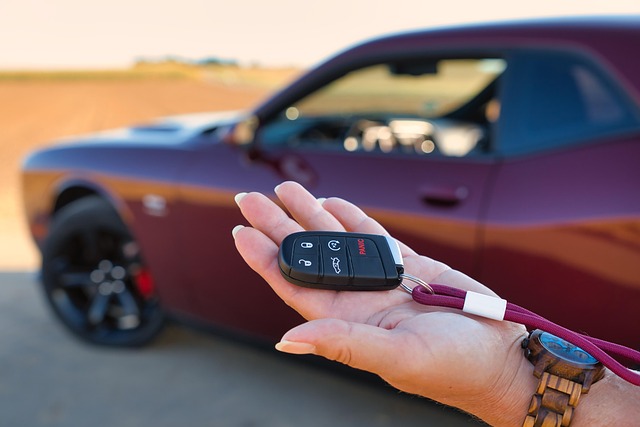Looking to register your car in California? This comprehensive guide walks you through the entire process, from understanding key requirements to finalization. Discover the importance of gathering essential documents, leveraging the VIN Verifier for vehicle identification, and completing your registration application smoothly. By following these steps, including effective use of the VIN Verifier, you’ll efficiently register your car in California.
- Understanding the Registration Process
- Gathering Necessary Documents
- Using the VIN Verifier in California
- Completing the Registration Application
- Finalizing and Paying for Your Registration
Understanding the Registration Process

Understanding the Registration Process in California
Registering a car in California involves several steps, which can seem daunting at first. However, with proper preparation and knowledge of the process, it becomes much smoother. The initial step is to ensure that your vehicle meets all safety and emission standards set by the state. This includes passing a smog test, if required, using a reliable vin verifier to check the vehicle’s history and condition. Once these criteria are met, you can gather necessary documents such as proof of ownership, insurance, and identity.
The next crucial phase is visiting a California Department of Motor Vehicles (DMV) office or completing the registration process online. You’ll need to fill out the appropriate forms, providing detailed information about your vehicle and personal details. For added convenience, consider utilizing mobile vin verification services that allow you to complete certain steps from the comfort of your home. This modern approach streamlines the traditional vin inspection process, making car registration in California more efficient than ever before.
Gathering Necessary Documents

Before you begin the registration process, make sure to gather all the essential documents required by the California Department of Motor Vehicles (DMV). One crucial piece is the Vehicle Identification Number (VIN) verifier, which can be obtained through a mobile VIN verifier service or an official DMV form. This unique identifier ensures the vehicle’s authenticity and history. Additionally, you’ll need your current registration, proof of insurance, title, and driver’s license.
It’s important to have accurate and up-to-date information for a seamless registration experience. The VIN inspection is a critical step, as it helps verify the vehicle’s condition and ownership, so ensure you use reliable resources like a mobile VIN verification service for this purpose. With all these documents in hand, you’re well on your way to registering your car in California.
Using the VIN Verifier in California

Using a VIN Verifier is a crucial step in registering your car in California. The state requires a Vehicle Identification Number (VIN) inspection to ensure that your vehicle meets all safety and emissions standards before issuing a registration. This process is streamlined with the help of a VIN verifier, which can quickly pull up detailed information about the vehicle’s history, including any previous accidents or outstanding issues.
In California, you have the option for a mobile VIN verification, making it even more convenient. Instead of visiting a DMV office, you can use a service that comes to you. This not only saves time but also adds an extra layer of convenience during what can sometimes be a lengthy registration process. A mobile VIN inspection ensures that all necessary checks are conducted promptly and accurately, helping you get your car registered smoothly and efficiently.
Completing the Registration Application

Completing the Registration Application involves gathering essential information and ensuring your vehicle’s details are accurate. Start by obtaining a Vehicle Identification Number (VIN) verifier, which can be done through various online platforms or local services. This tool is crucial for confirming your car’s identity during the registration process. Once you have your VIN, fill out the application form, providing details like the make, model, and year of your vehicle. Accurately record the odometer reading, as this information is critical for tracking maintenance and ownership history.
Additionally, be prepared to submit necessary documents such as proof of insurance, a valid driver’s license, and any prior registration records. Some regions in California offer the option for a mobile vin inspection or mobile vin verification, making it convenient to complete these steps without visiting a DMV office. This digital approach streamlines the process, ensuring a smoother experience for new car owners.
Finalizing and Paying for Your Registration

After gathering all the necessary documents and ensuring your car meets California’s requirements, it’s time to finalize your vehicle registration. The next step involves submitting your application to the California Department of Motor Vehicles (DMV). This typically includes paying the registration fees, which vary based on your vehicle type. You can opt for several convenient payment methods, such as cash, credit card, or debit card.
For added convenience and peace of mind, many individuals choose to use a mobile VIN verifier to ensure their vehicle’s history is clean before completing the registration process. This step helps verify that the car has not been reported stolen or has any outstanding issues, making it safer for you and other California drivers on the road.
Registering a car in California involves understanding the process, gathering essential documents, utilizing the VIN verifier, completing applications accurately, and finalizing with payment. By following these steps and making use of tools like the VIN verifier, you can ensure a smooth registration experience for your vehicle in the Golden State.
